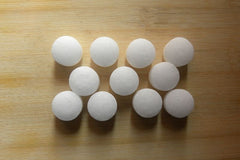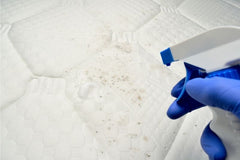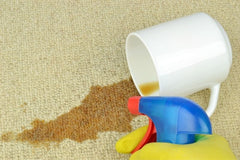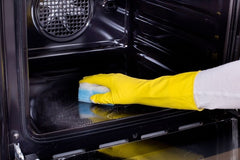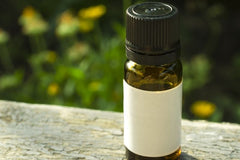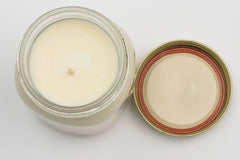A How-to Guide to Building Your Perfect Homemade Serum for Face

Taking care of your skin is an important part of looking after your overall health. Some parts of your body need more attention than others. Your face, for example, is regularly exposed to the sun, sweat, dirt, and more. It’s important that you be proactive about caring for it.
Regularly using a natural face serum can do wonders for your face. It can protect your face from future damage, soothe sensitive skin, and improve the appearance of fine lines and wrinkles, just to name a few of the benefits of using face serum.
But it can be challenging to know what you’re getting if you buy face serum from a store. That’s why many wellness-enthusiasts have begun creating their own homemade serum for the face.
You can do so too. Keep reading to learn what it takes to make a homemade face serum and to get specific recipe recommendations for your skin type.
If you’re ready to start shopping for DIY face serum ingredients now, check out our best:
- Wellness Maker Kit for everything you need to create homemade face serums
- Geranium Rose Oil for a face serum that will hydrate dry skin
- Empowering Essential Oil Blend Kit for essential oils to personalize your serum
What is a natural face serum?
Face serums are skincare products that are meant to infuse your skin with numerous health-supporting nutrients. They exist in several different forms to support the varying skincare needs of different types of people.
Serums are typically either gel-based or purely liquid. While they aren’t as thick as most moisturizers, serums can offer your skin more in the way of hydration. This is because they’re packed with nutrient-rich ingredients that are designed to penetrate the skin to hydrate on the deepest level.
Natural face serums provide these benefits without using any harsh or artificial chemicals to do so. When homemade, they also provide the opportunity to personalize the nutrients you give to your skin.
How do you use it?
When to Use
Experts recommend that you use a facial serum both in the morning and at night. They should be the second step in most people’s daily skincare routine.
In the morning, you’ll apply your face serum after cleansing but before putting on any moisturizer or sunscreen. At night, you’ll cleanse, use your serum, and then apply any other skincare products you wish to use.
It’s crucial that you follow this usage order to maximize the benefits offered by your face serum. Products like moisturizers and sunscreens, when used first, can block a serum from penetrating into the deepest layers of your skin, thereby limiting its effectiveness.
How to Use
Less is more when using a serum. You only need to use enough to lightly cover your face and neck. That typically translates to 2 pumps or, if you’re using a dropper, 3-4 drops.
Use any more than this and you could risk irritating your skin and limiting the serum’s capacity to penetrate it.
It’s easiest to use your fingertips to apply face serum. Gently apply it, then lightly tap, pat, and smooth until it’s been absorbed into your skin.
(Check out our Wellness Maker Beauty Kit.)
How can I make my own homemade serum for my face?
Creating your own homemade serum for your face is very easy. You need to begin the process by gathering the correct ingredients.
There are three main ingredients that go into a face serum: carrier oil, essential oil, and vitamin E. You can vary the carrier oil and essential oils that you use to better serve your unique skin care needs.
Your first option is to add each of these ingredients into a bowl, one by one. You’ll mix in each new addition as you go until the ingredients are completely combined with one another.
You can also make your face serum directly in the dropper bottle that you plan to hold it in. You’ll add the ingredients individually and shake the bottle as you go to mix them.
What equipment do I need to make a homemade face serum?
You don’t need to make a large investment before you can begin making homemade face serum. But there are several tools that you’ll want to purchase to make the process easier on yourself.
It’s helpful to purchase the following:
- Mixing spoon
- Mixing bowl
- Mini liquid funnel
- Pipettes to count drops
- 20 ml dropper bottle
You may not even need to buy a mixing spoon or mixing bowl if you plan on creating your serum directly in your dropper bottle.
If you’d like to simplify the buying process, our Wellness Maker Kit includes all of the equipment that you need to create your own face serums.
7 oil combinations to cover every skin type:
For dark spots
To clear away dark spots, you can use essential oils like:
- Rosemary
- Clary Sage
- Turmeric
- Chamomile
- Frankincense
- Neroli
- Argan oil
- Geranium
- Lavender
- Tea tree
If you’re looking for a specific face serum blend that will address the dark spots on your skin, we recommend using the following:
- 10 ml argan oil
- 10 ml carrot seed oil
- 4 drops Frankincense essential oil
- 4 drops lemon essential oil
- 5 drops rose essential oil
- 5 drops sandalwood essential oil
- 1/2 tsp vitamin E oil
For acne scars
You can improve the appearance of your acne scars by adding the following oils to your face serum recipe:
- Rosehip seed oil
- Almond oil
- Coconut oil
- Cedarwood essential oil
- Carrot seed essential oil
- Lavender essential oil
- Geranium essential oil
Here’s a recipe that you can follow to unlock the power of essential oils to improve acne scarring:
- 2 ounces of jojoba
- 5 drops tea tree essential oil
- 5 drops lemongrass essential oil
- 10 drops lavender essential oil
For oily skin
Essential oils that balance sebum production will support the needs of people with oily skin. These include options like:
- Jojoba oil
- Grapeseed oil
- Almond oil
- Rosehip seed oil
- Avocado oil
- Geranium essential oil
- Bergamot essential oil
Here’s our recipe for a homemade face serum that’s perfect for oily skin:
- 2.5 teaspoon sweet almond oil
- 1 teaspoon rosehip seed oil + Vit E 2%
- 1/2 teaspoon avocado oil
- 1-2 drops geranium essential oil
- 2 drops bergamot essential oil
For dry skin
People with dry skin can use essential oils to hydrate and soothe their skin. Some of the best options for this include:
- Lavender
- Almond oil
- Helichrysum
- Myrrh
- Avocado oil
- Frankincense
- Geranium
- Carrot seed
- Cucumber seed
Here’s our recipe for a face serum that replenishes dry skin:
- 1.5 teaspoon sweet almond oil
- 1/2 teaspoon rosehip seed oil + Vit E 2%
- 2 teaspoons avocado oil
- 1-2 drops geranium essential oil
- 2 drops bergamot essential oil
For anti-aging
Some essential oils are capable of supporting a healthier aging process by combating the appearance of wrinkles. These include:
- Lemon
- Sandalwood
- Clary sage
- Pomegranate
- Lavender
- Ylang-ylang
- Rosemary
Here’s a good homemade face serum recipe for people with mature skin:
- 2 ounces rosehip seed oil
- 5 drops rose essential oil
- 5 drops helichrysum essential oil
- 5 drops frankincense essential oil
- 5 drops geranium essential oil
For Normal Skin
People with normal skin can choose from a wide variety of essential oils when designing their face serums. Some of the best choices include:
- Sweet almond oil
- Avocado oil
- Geranium essential oil
- Rosehip seed oil
- Bergamot essential
For people with normal skin, we recommend the following formulation:
- 2.5 teaspoons sweet almond oil
- 1/2 teaspoon rosehip seed oil + Vit E 2%
- 1 teaspoon avocado oil
- 1-2 drops geranium essential oil
- 2 drops bergamot essential oil
For Sensitive Skin
If you have sensitive skin, you need to take care to ensure that the essential oils you use don’t cause irritation. Here are your best options:
- Lavender essential oil
- Frankincense essential oil
- Sandalwood oil
- Sweet almond oil
- Rosehip seed oil
- Avocado oil
- Geranium essential oil
- Bergamot essential oil
If you have sensitive skin, then this is the homemade face serum recipe for you:
- 1.5 teaspoon sweet almond oil
- 1/2 teaspoon rosehip seed oil + Vit E 2%
- 2 teaspoons avocado oil
- 1-2 drops geranium essential oil
- 2 drops bergamot essential oil
The 3 essential oils any homemade serum for face needs
While some essential oils have niche applications, others make an excellent addition to virtually every type of homemade face serum. You should seriously consider adding these three oils to every serum you make.
1. Lavender Essential Oil
Lavender essential oil is a highly versatile ingredient that provides healing benefits that people with all types of skin can enjoy. For example, it kills bacteria, which means that it’s capable of preventing and healing acne breakouts. Lavender unclogs pores and reduces inflammation to further aid the healing process.
Lavender oil is also excellent at reducing skin discoloration and dark spots. Its properties may also help to reduce your skin’s blotchiness and redness.
Finally, this ingredient can also reduce the appearance of wrinkles. It’s packed with antioxidants, which protect you from free radicals -- one of the primary causes of wrinkly skin.
2. Geranium Essential Oil
Geranium essential oil is another versatile ingredient that will fit into any recipe for homemade face serum. It has antibacterial, antimicrobial, and antiseptic properties. These make it an excellent option for addressing acne, skin irritation, and skin infections.
This ingredient also does an excellent job of controlling oily skin. It works to balance your skin’s sebum levels and to unlock its pores. This makes it easier for your skin to breathe and has the potential to keep it looking fresher and younger for longer.
3. Sweet Almond Oil
Almond oil is packed with nutrients like vitamins A and E, as well as omega-3 fatty acids and zinc. These make it an excellent choice for virtually any type of homemade face serum.
The effects that almond oil can have on your skin are impressive. It has the potential to:
- Reduce puffiness and under-eye circles
- Improve complexion and skin tone
- Treat dry skin
- Improve acne outbreaks
- Help reverse sun damage
- Reduce the appearance of scars
If you’re looking for a do-it-all addition to your next serum recipe, then almond oil is an excellent choice.




